Overview
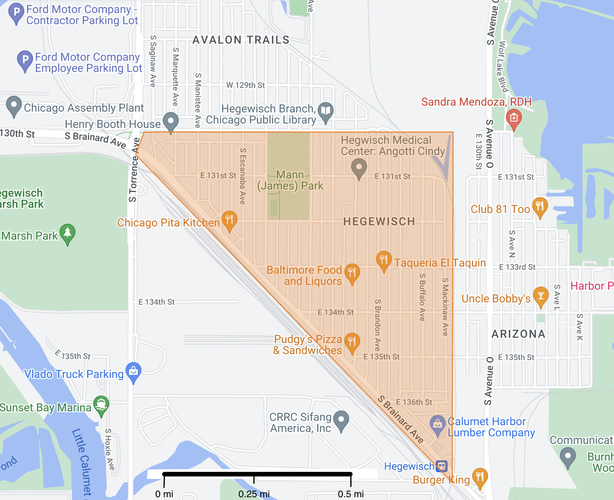
Hegewisch is both a neighborhood in Chicago and the southeasternmost community area in the city. The neighborhood of Hegewisch, however, is smaller than the community area, which also contains the neighborhoods of Arizona, Avalon Trails, and Harbor Point Estates, along with substantial uninhabited land area in the form of large parks and the William W. Powers State Recreation Area. The neighborhood of Hegewisch spans north to south from E. 130th Street to S. Brainard Avenue, and west to east from S. Brainard Avenue to S. Mackinaw Avenue. This almost-triangular neighborhood is approximately 300 acres in area, with all homes and businesses sitting no more than 0.7 miles from the neighborhood’s center. Hegewisch’s streets are in a grid layout, and the neighborhood is relatively spread out given the large number of single-family homes. Almost all of the homes face the street with a front (and oftentimes back) yard, and in the center of the neighborhood, residential buildings are interspersed with commercial businesses. Hegewisch is divided into four census block groups, with a total population of approximately 5,200.
In most directions, the delineating boundaries of Hegewisch are clear. To the south and west, the neighborhood is bounded by diagonally-running train tracks utilized both for freight transportation and passenger commuter travel between Indiana and downtown Chicago on the South Shore Line. There is no crossing point over these tracks for almost the entire length of Hegewisch, largely isolating the residents of the neighborhood from regular interaction with the sparsely populated area across the tracks. To the east, the neighborhood is again bounded by train tracks and a stretch of green space, over which run extensive systems of electricity cables. While this boundary line is less strict than the tracks forming the south and west boundary, as cars and pedestrians can cross this boundary in three places, the long stretch of undeveloped space distinguishes Hegewisch from the neighboring Arizona. The northern boundary of Hegewisch is the least clearly defined, as Avalon Trails and Hegewisch have no clear geographical delineation. However, E. 130th Street seems like the most viable dividing line between the two neighborhoods, and is the boundary used by Google Maps. The street serves as a breaking point for back alleyways, as each of the north-south running back alleyways that exist north and south of E. 130th Street through Hegewisch are not continuous through E. 130th Street. Furthermore, the north end of Mann Park lies at E. 130th St., slightly inhibiting traffic between the north and south, and thus seemingly serves as both a gathering space and a dividing line. The park lies at the Hegewisch’s border rather than its center, serving as a shared recreational space for both neighborhoods, but also as a delineation point. Across the street from the park is the Hegewisch Branch of the Chicago Public Library, which similarly serves as a shared resource between Avalon Trails and Hegewisch. Finally, Avalon Trails is centered around one CPS elementary school, while Hegewisch to the south is home to CPS’s Clay Elementary School.
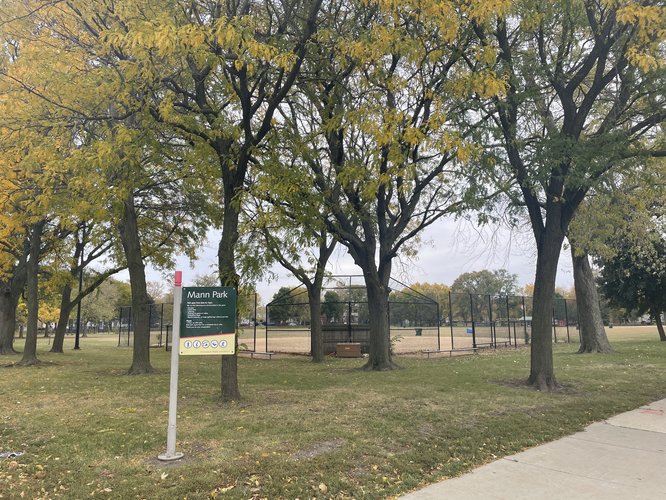
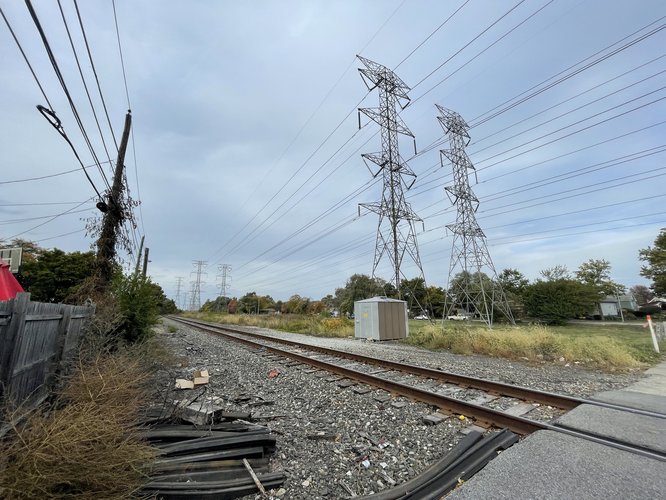
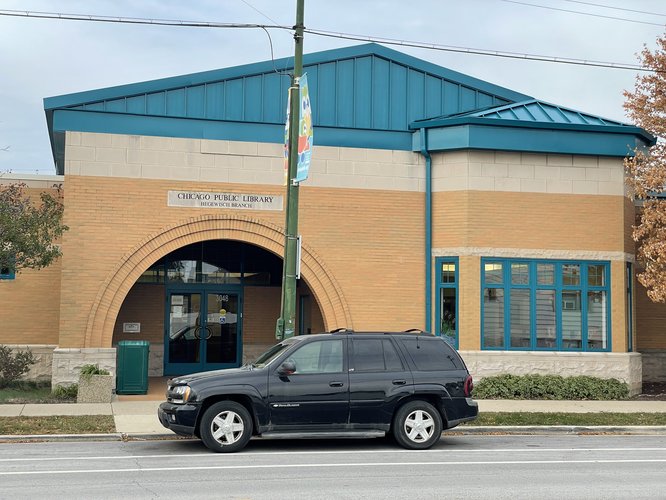
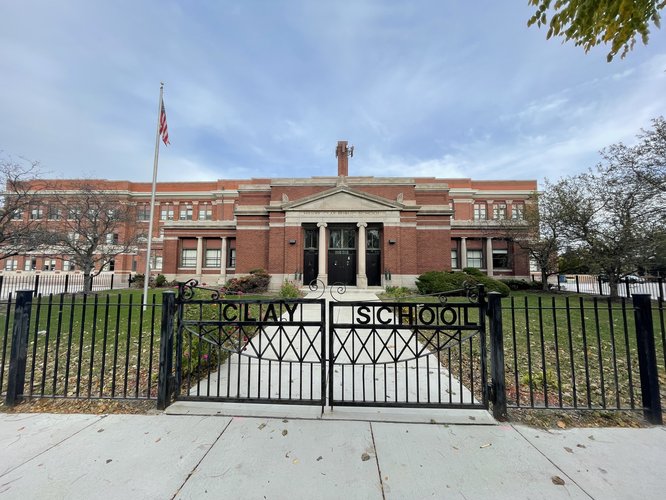
The residential areas of Hegewisch do not seem to necessarily have a distinct “Hegewisch” identity, but they nonetheless have a significant level of homogeneity. The neighborhood is made up primarily of single-family homes, most with a front yard facing the street. A significant number of prisoner of war flags fly around the neighborhood, along with union signs and posters for supporting alderperson candidates in the upcoming election for the 10th Ward. And although the neighborhood is primarily residential, its main commercial area does make an effort to have a distinct identity. The commercial area is encompassed mostly within the rectangle formed by E. 132nd Street, E. 134th Street, S. Baltimore Avenue, and S. Brandon Avenue. Walking down South Baltimore Avenue, one will notice that the street is lined with “Hegewisch” signs overhead on lampposts. Establishments such as Henry Booth House Hegewisch Head Start bear the neighborhood’s name, and the neighborhood has its own community-oriented business organizations, like the Hegewisch Chamber of Commerce and the Hegewisch Business Association.
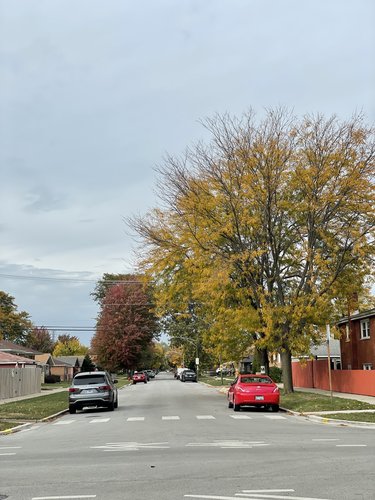
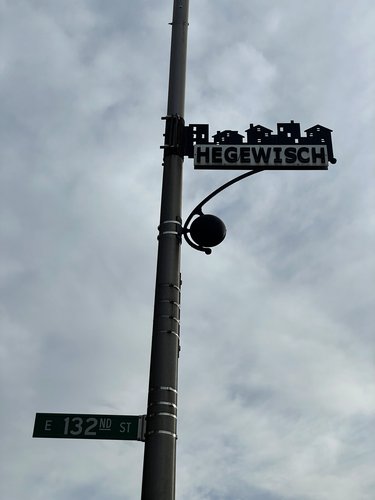
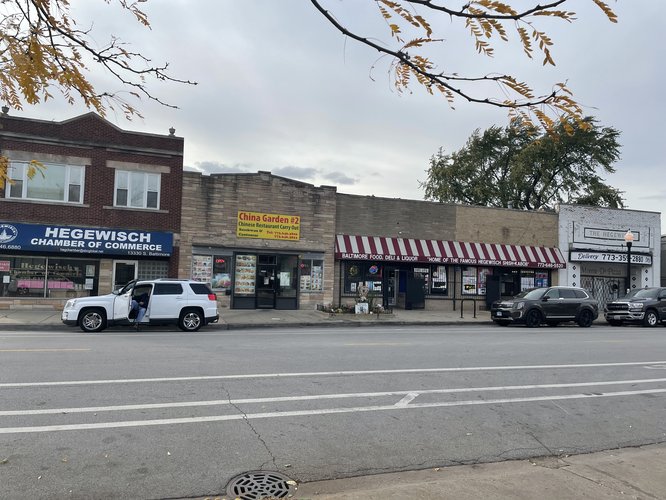
The Hegewisch train station similarly serves as an identifying location for the community. Located towards the southern point of the neighborhood, the train station bears the Hegewisch name and is the main public transportation stop for getting into and out of the relatively isolated neighborhood. Although it would likely be beneficial to Hegewisch residents to have greater or more frequent access to public transportation, having this singular main connection site to the rest of the city nevertheless appears to be a location that is a shared and often-utilized space for many community members.
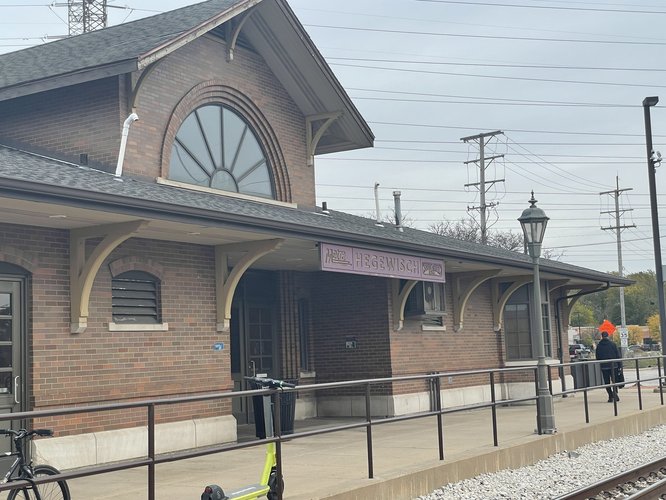
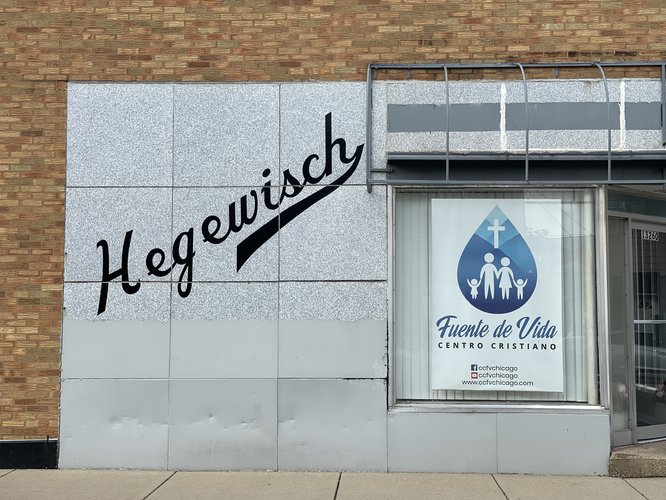
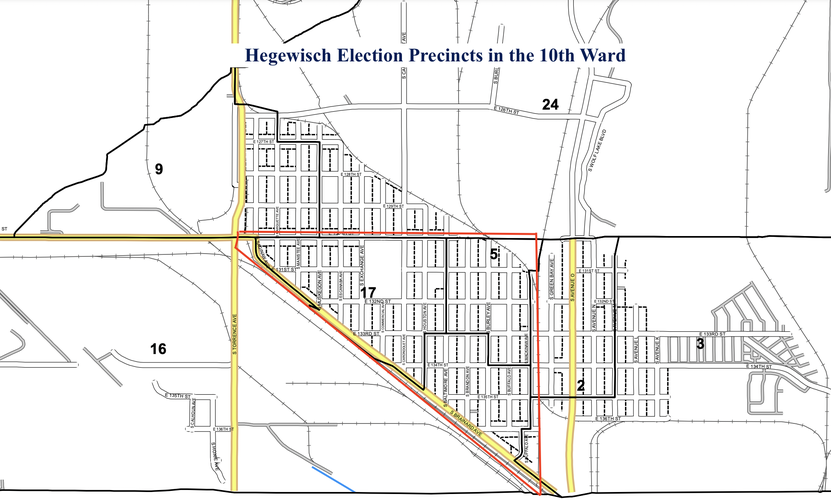
The Hegewisch neighborhood is contained within the 10th Ward of Chicago. Out of the 36 election precincts in the ward, Hegewisch is covered by three precincts: the 5th, 16th, and 17th. This precinct map provides further support for how the boundaries of Hegewisch are defined here, as the precincts are similarly bounded by S. Brainard Avenue, E. 130th Street, and S. Mackinaw Avenue.

Four census block groups cover the Hegewisch neighborhood. In this map, each different shade bounded by the black lines represent a different census block group within Hegewisch. As with the election precincts, the boundaries of the census block groups do a relatively good job of following the boundaries of the neighborhood itself. The census block groups suggest that the highest population density in the neighborhood is in its northeastern section, and they can help us estimate the neighborhood's population to be around 5,200.
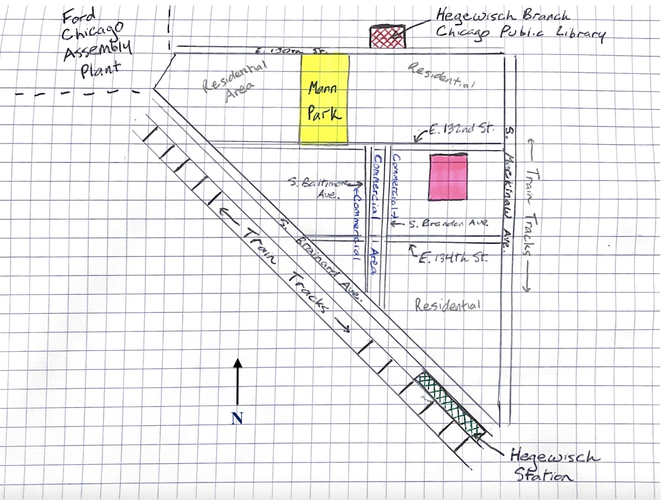
Hegewisch received its name and layout beginning in 1883, when Adolph Hegewisch, the President of the U.S. Rolling Stock Company, decided to develop the area as a new town along the pre-existing rail line. The company itself moved its operations from a location further west so that it would border the new town of Hegewisch, while Adolph Hegewisch intended to use the geographical location of the new town not because of its strategic placement along the rail line, but also for the development of two canals (though neither were ever built). Adolph Hegewisch’s goal was the creation of “an ideal workingman’s community,” and he thus established Hegewisch with the goal of creating a planned, working-class community with close proximity to his company’s industrial manufacturing. In many ways, the vision for Hegewisch was quite similar to the development described by Ann Keating in her chapter “Industrial Towns of the Railroad Age”: the neighborhood was founded by a railroad line at the periphery of the city, and planned for industrial laborers to live near their workplace.
Zooming out, the region that eventually became Hegewisch was part of the Hyde Park Township even before Adolph Hegewisch began to develop the neighborhood, starting in 1867. When the entirety of Hyde Park Township was annexed by Chicago in 1889, Hegewisch officially became a part of the city.
Although Adolph Hegewisch anticipated a population of 10,000 in Hegewisch by 1885, the community did not grow quickly, in part due to the lack of funding for Hegewisch’s proposed canals; according to the Chicago Encyclopedia, only about 500 people lived in the community by 1889. The neighborhood continued to develop as a community for industrial workers in the following decades, as new steel mills were built around Hegewisch. According to the Chicago Encyclopedia, the neighborhood included significant populations of immigrants from Eastern Europe, Sweden, and Ireland.
The neighborhood developed as a settlement for manufacturing laborers, and although the manufacturing industry has largely left the city, Hegewisch still neighbors the present-day Chicago Assembly Plant for Ford Motor Company. The plant employs over 5,800 people (source), and while these are certainly not all Hegewisch residents, it demonstrates that Hegewisch is one of the few Chicago neighborhoods originally developed for industrial production that still has an active manufacturing presence today.
Located in the southeastern-most corner of Chicago, Hegewisch seems almost suburban compared to the rest of the city. It is made up primarily of single-family homes, the number of active commercial businesses is relatively low, and there is limited accessibility to public transportation.
Gellman, Erik. "Hegewisch." Encyclopedia of Chicago. http://www.encyclopedia.chicagohistory.org/pages/577.html.
Sellers, Rod, and Dominic A. Pacyga. Chicago's Southeast Side. 1998.
Maps created using Google MyMaps, Chicago Data Portal, and Social Explorer.

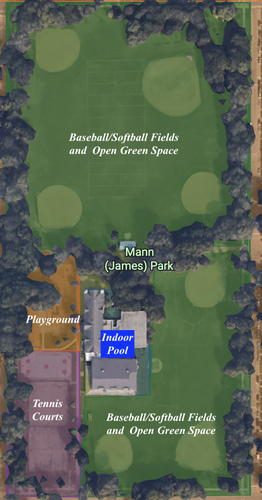
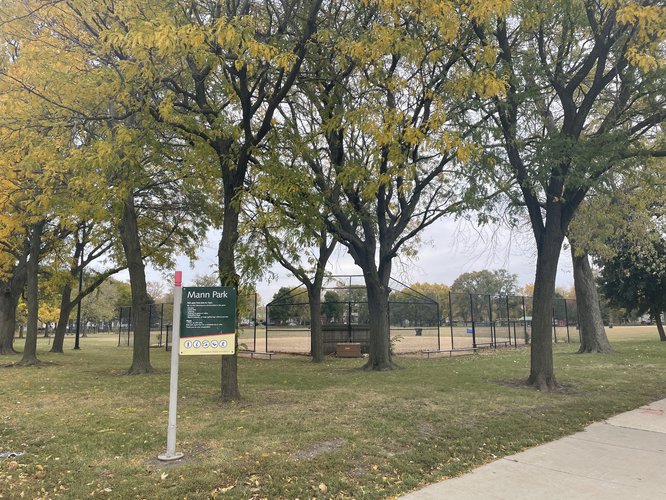
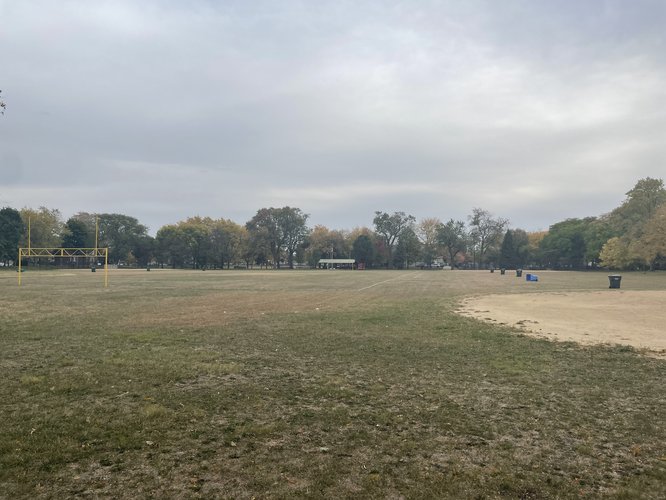


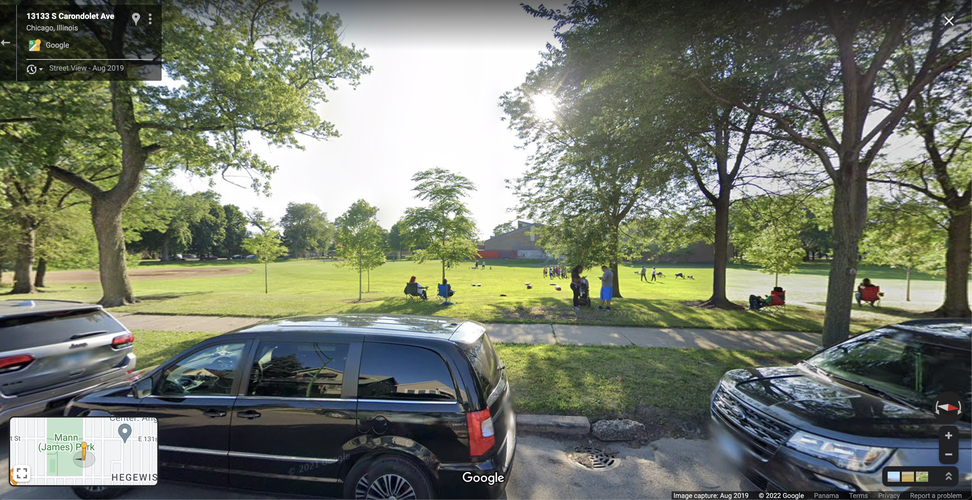
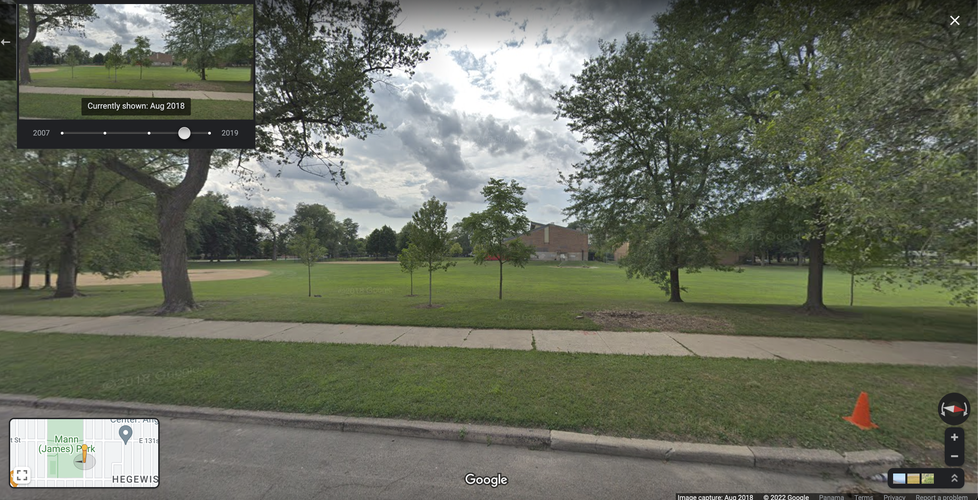
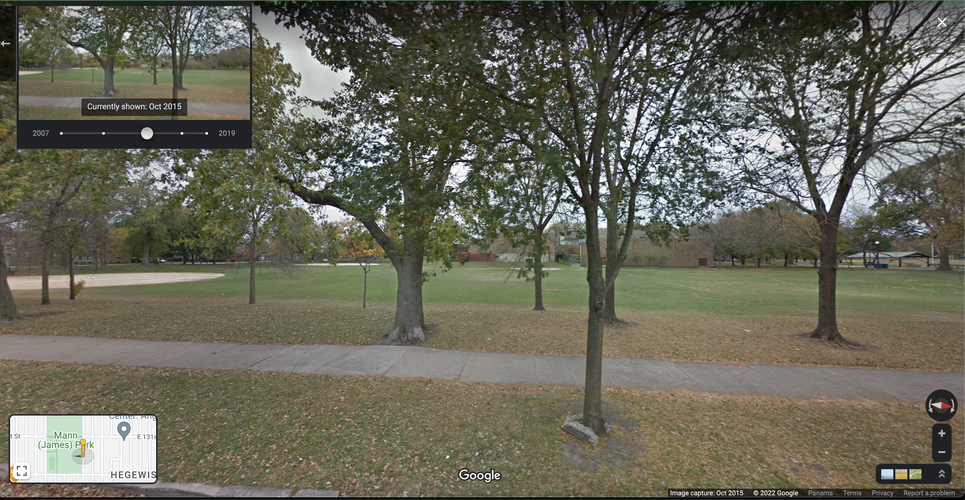
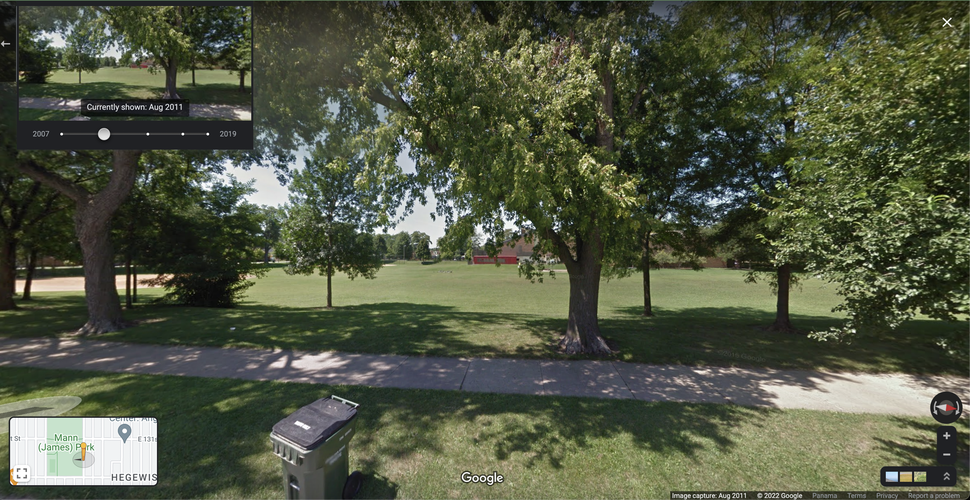
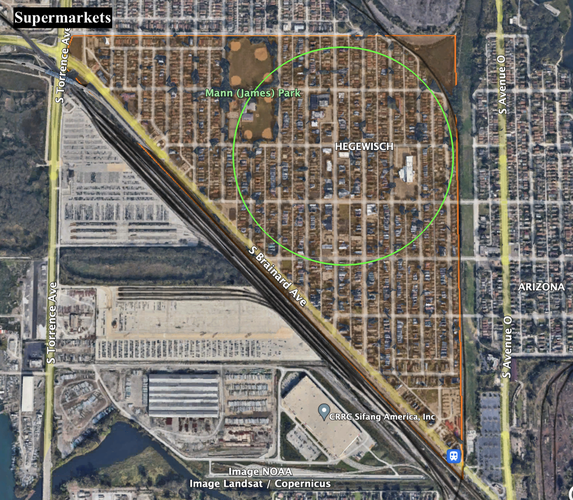

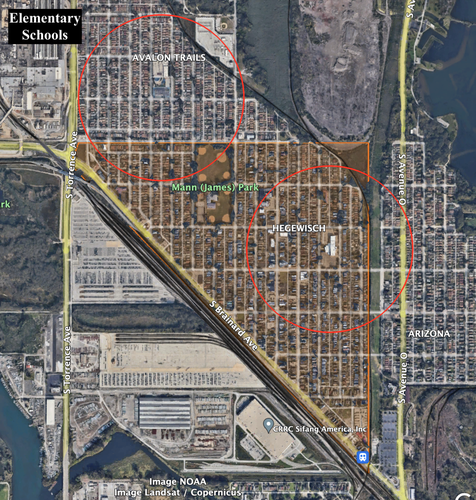

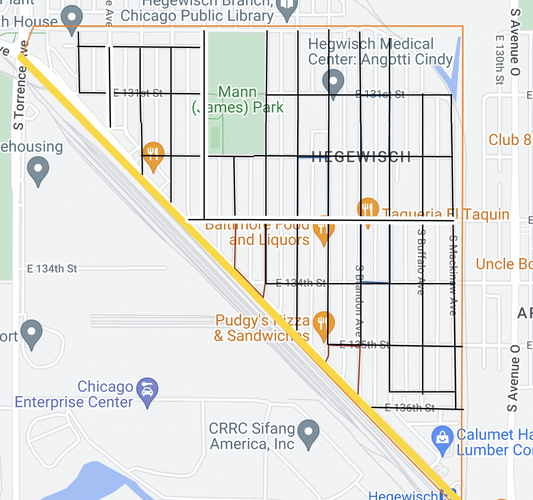
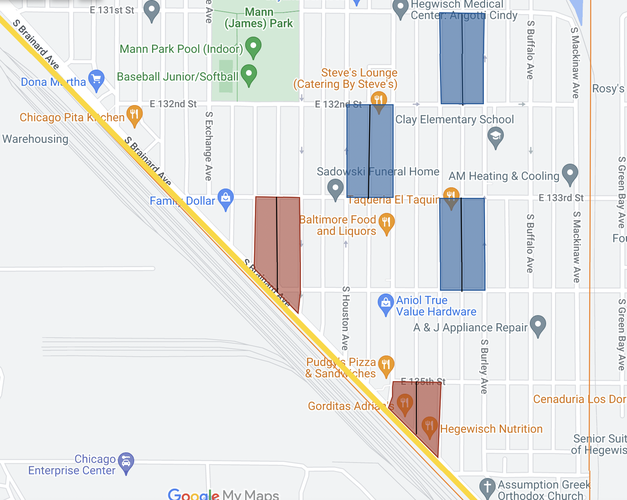


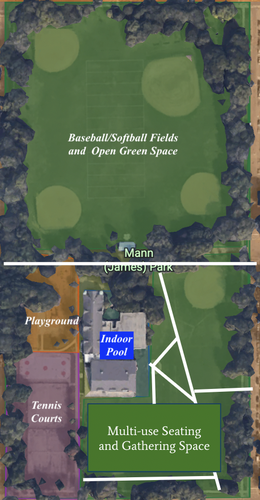

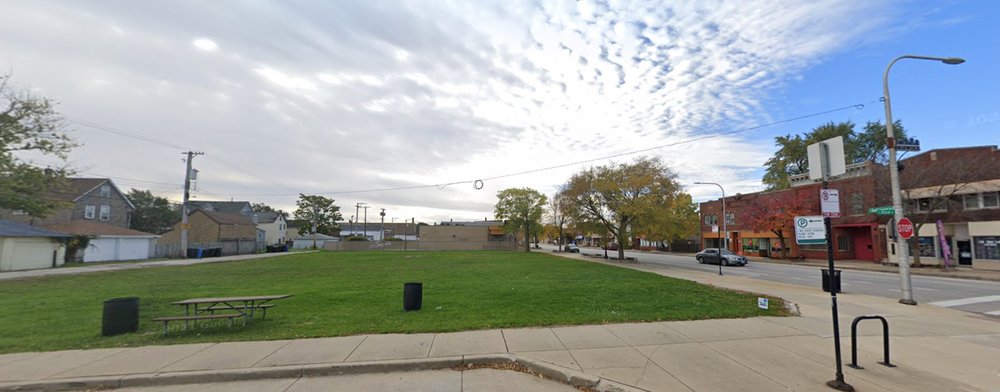
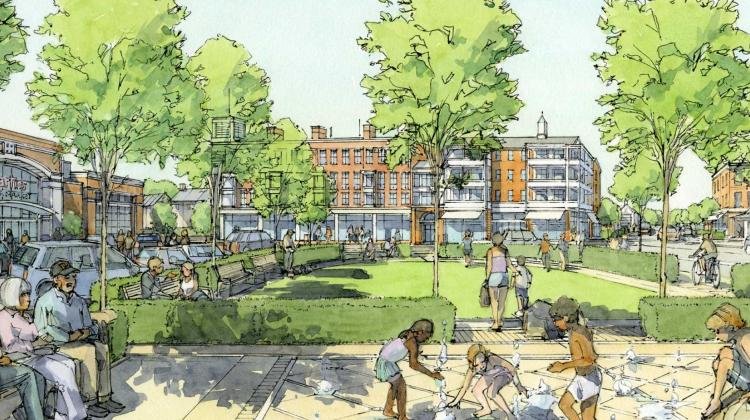
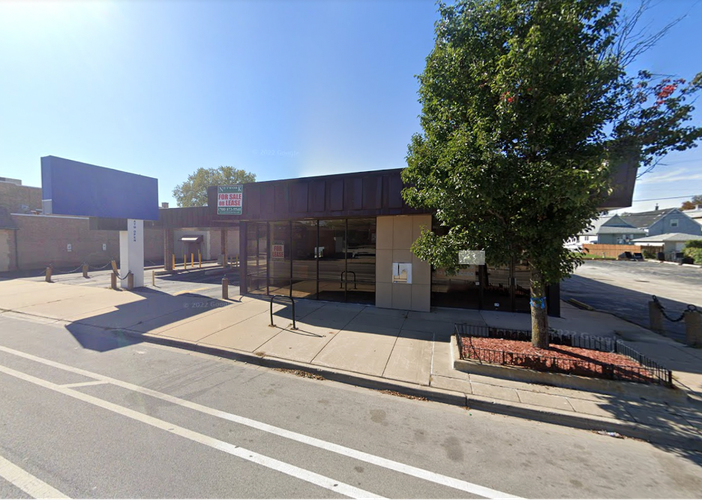
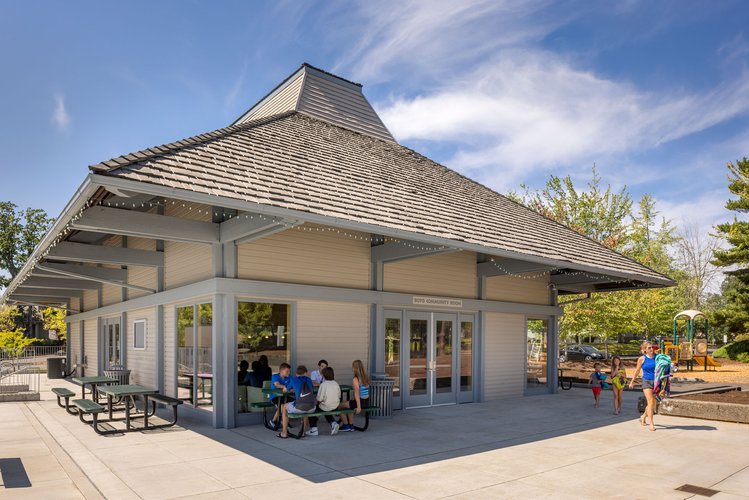
Social Mix
The table above compares Simpson's Diversity Indices for the neighborhood of Hegewisch with those for the greater Hegewisch community area, the Far South region of Chicago, and the City of Chicago itself. I have calculated and compared the Simpson's Diversity Indices for each of these regions in three demographic categories: race and ethnicity, educational attainment, and housing value.
Interestingly, looking at the Simpson's Indices for race and ethnicity, the Hegewisch neighborhood appears to be more diverse than both the larger Hegewisch community area and the Far South region of Chicago (which encompasses 12 community areas on the Far South Side). While almost 50% of Hegewisch neighborhood residents are Hispanic/Latino, this neighborhood seems to be an outlier as compared to the rest of the Far South Side, as the region itself is over 67% Black (and less than 15% Hispanic or Latino). It is difficult to tell from these calculations alone whether the neighborhood is more "diverse" than its community area or region, as it has a substantially lower population of Black residents as compared to the city at large (11.51% versus 29.20%), and a significantly greater Hispanic/Latino population as compared to the city (47.95% versus 28.60%). The racial and ethnic demographics of both the community area and the region vary significantly from Chicago overall, but in different ways (with Hegewisch being disproportionately Hispanic/Latino and the Far South Region being disproportionately Black/African American). Furthermore, according to these data, Hegewisch is home to 0 residents whose racial identity is "Asian Alone," "American Indian and Alaska Native Alone," or "Native Hawaiian and Other Pacific Islander Alone," suggesting that Hegewisch is lacking representation from significant racial and ethnic groups.
Looking at the Simpson's Indices for Educational Attainment, the Hegewisch neighborhood has the lowest index (and is thus the least diverse) as compared to its community area, the Far South Region, and the City of Chicago. The majority (61.3%) of Hegewisch residents over the age of 25 have not attained a level of education higher than a high school degree, and fewer than 12% of residents have received a Bachelor's degree or higher. There are much higher percentages of residents in the Far South Region and the City of Chicago who have received degrees of higher education, which likely accounts for their higher Simpson's Indices. These data suggest that Hegewisch has overall lower levels of educational attainment than these encompassing regions.
The housing value for owner-occupied units also appears to be less diverse in Hegewisch. The values of the vast majority of housing units (69.1%) seem to fall in the range of $100,000-$300,000, with fewer than 3% of housing units valued at greater than $300,000. The majority (64.4%) of housing units in the Far South Region fall within the same range, but over 13% of housing in the region is worth more than $300,000. The same goes for the city overall: 63.6% of owner-occupied homes are valued between $100,000-$300,000, but over 15% of homes are valued higher. The Simpson's Index for the Hegewisch community area is slightly lower than for the neighborhood itself, but this comparison does not in turn imply a high level of "diversity" in the neighborhood, as the neighborhood's housing values are still relatively homogenous.
While the Hegewisch population has representation from a variety of backgrounds related to race, educational attainment, and socioeconomic status (as measured through housing types), I would still not categorize the neighborhood as obviously "diverse." The neighborhood may have more racial/ethnic diversity as compared to the Far South Side overall, but groups like Black residents and Asian residents are significantly underrepresented (particularly when the surrounding neighborhoods of the region are overwhelmingly Black). Levels of educational attainment and housing value are relatively homogeneous, Hegewisch lacks the diversity of the rest of Chicago in both of these categories.
Data compiled from Social Explorer, 2020.